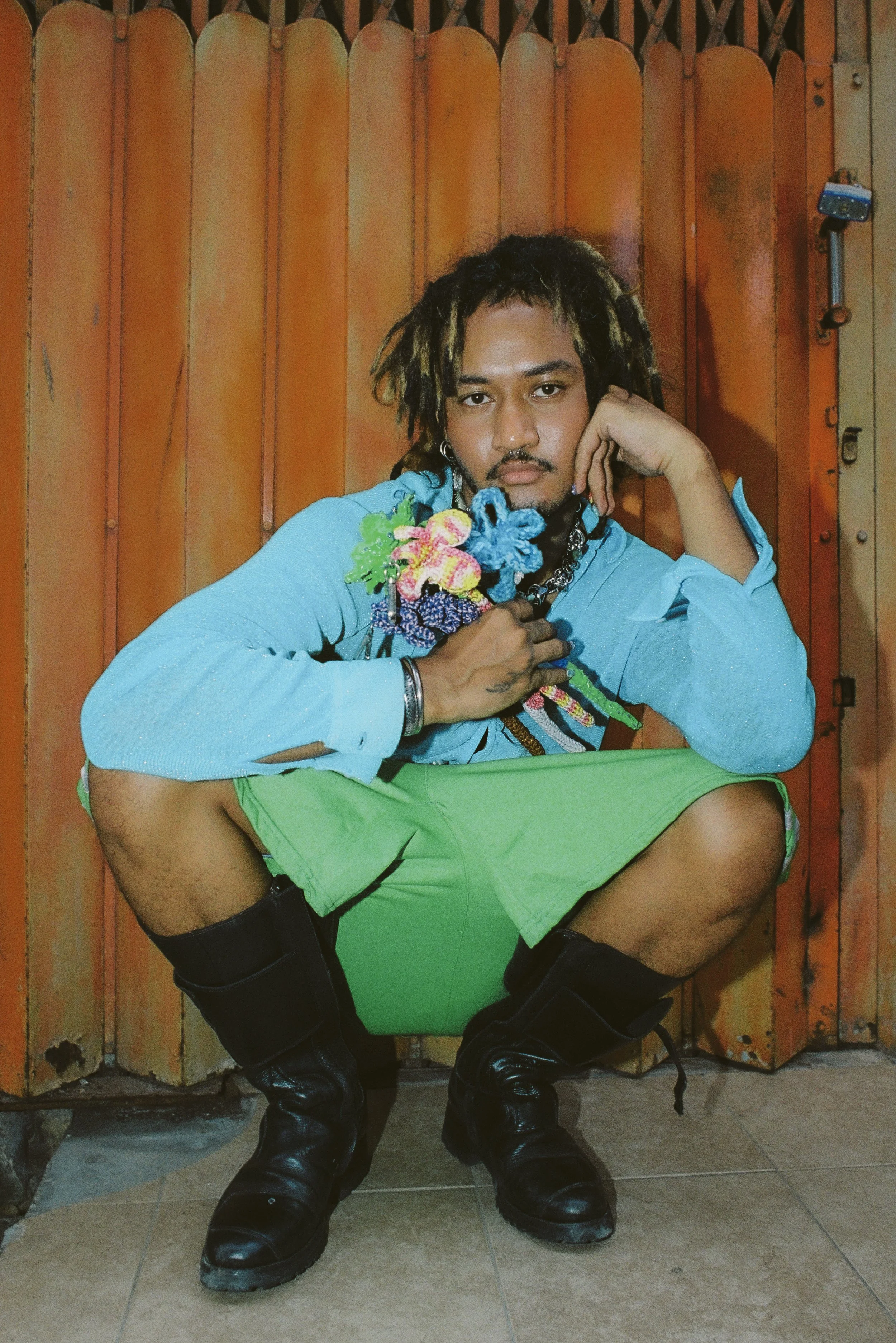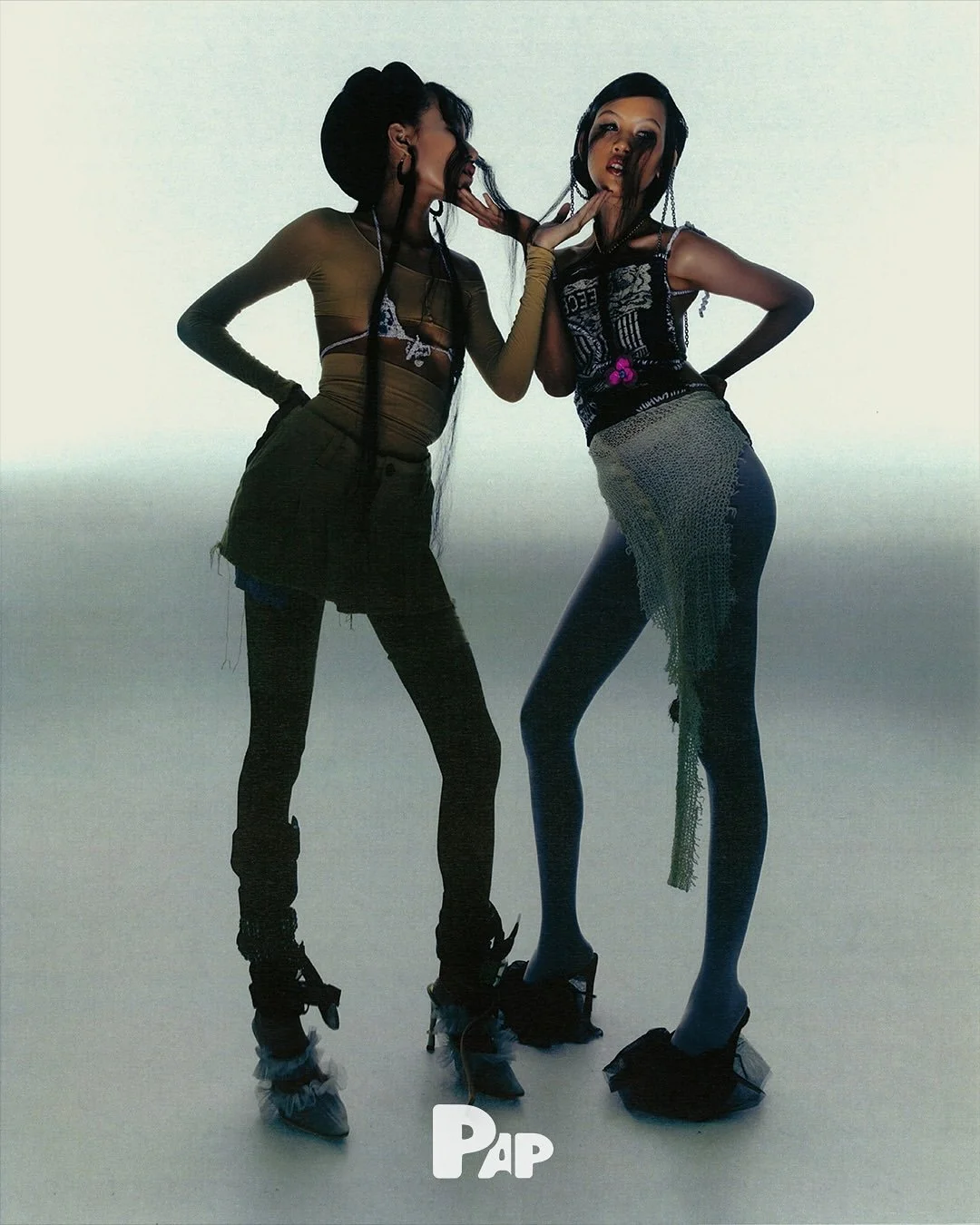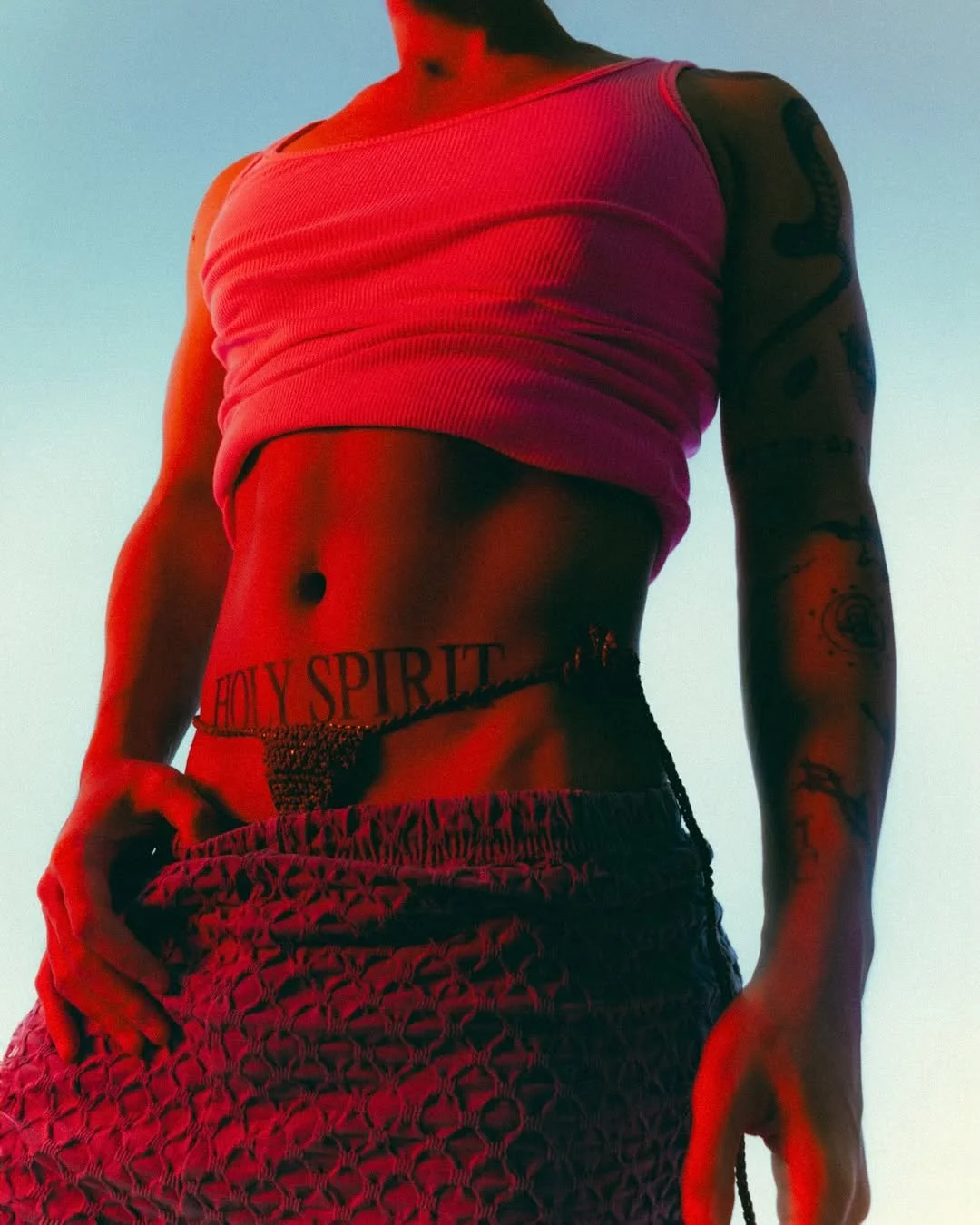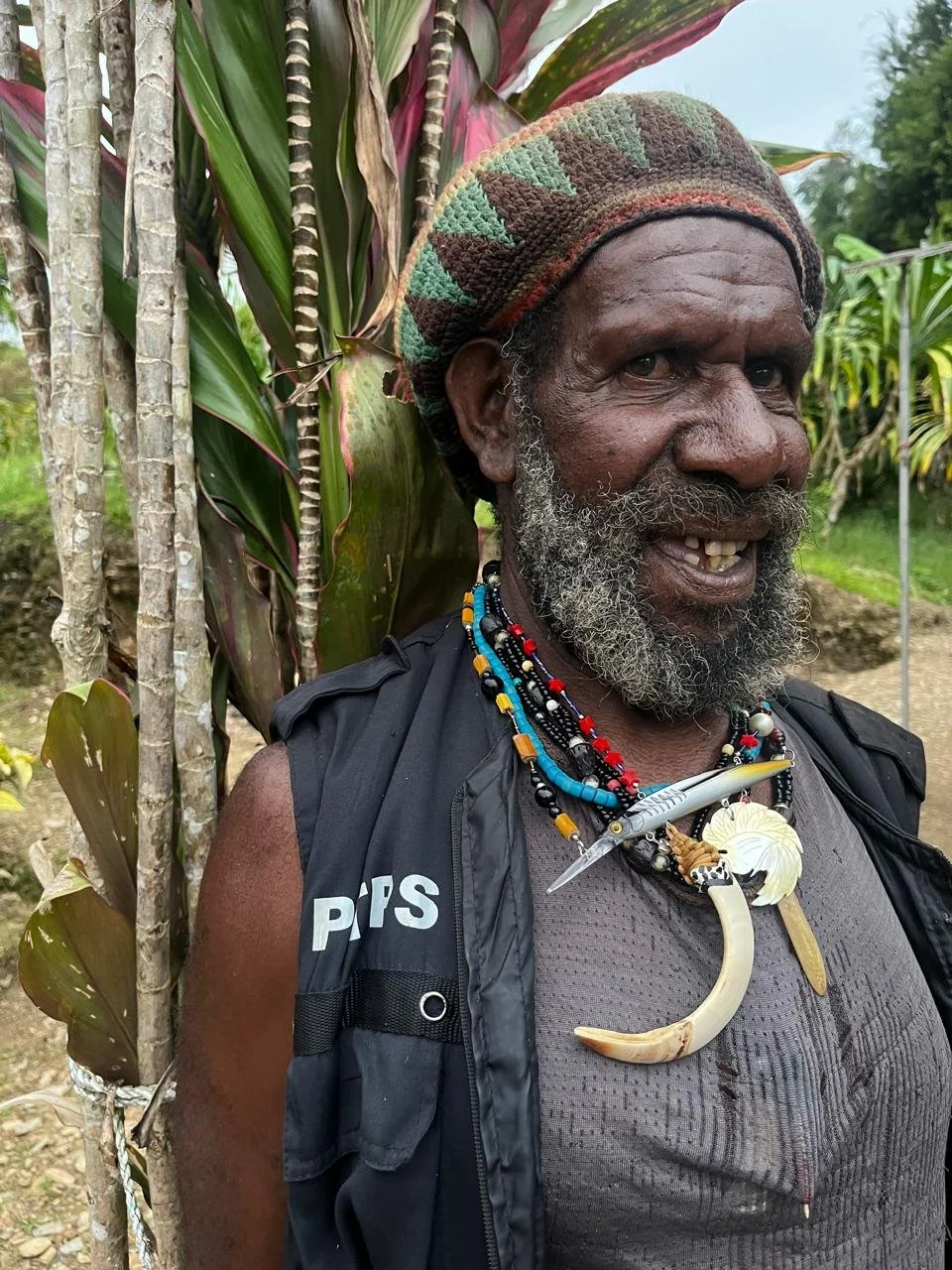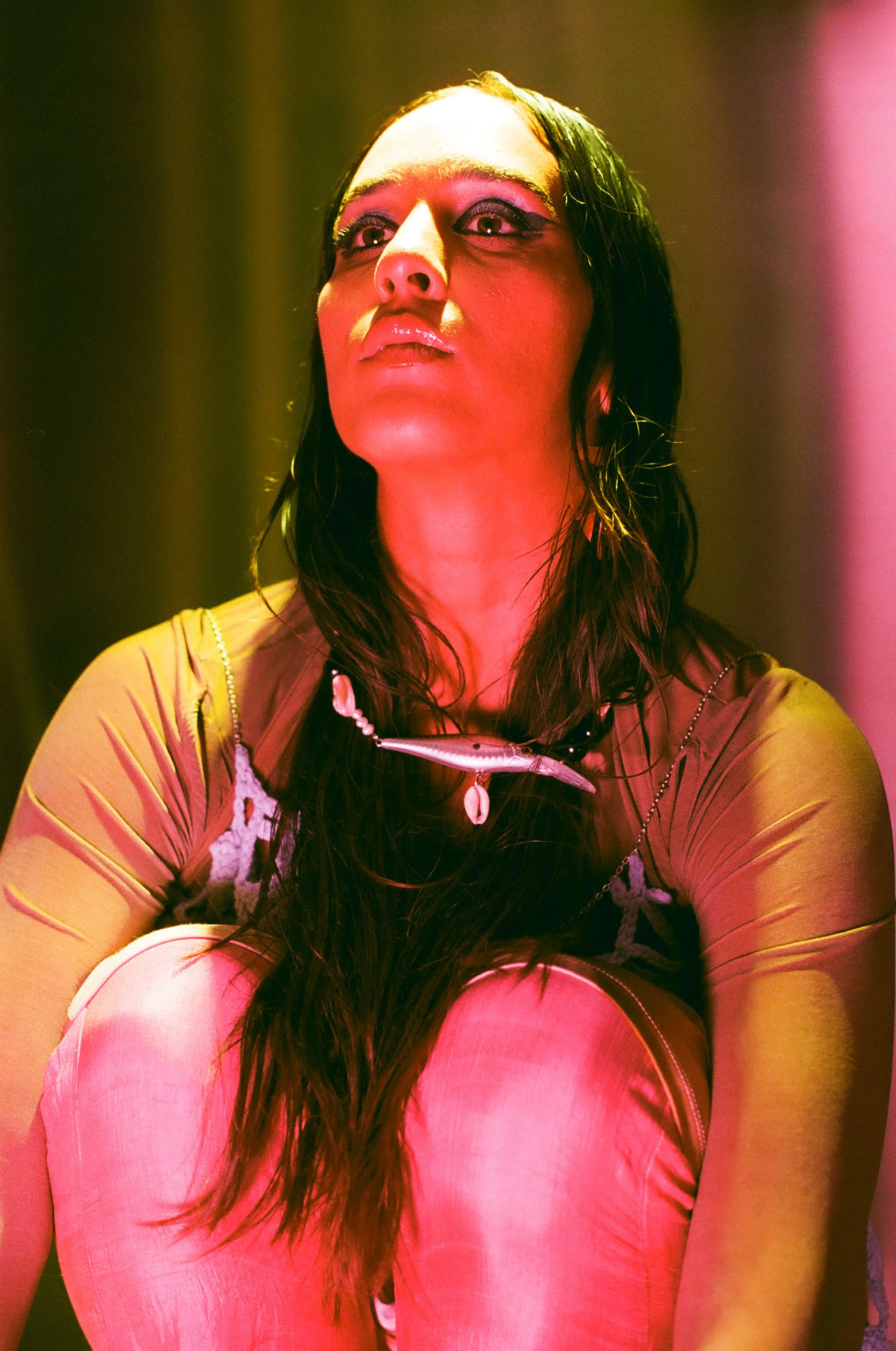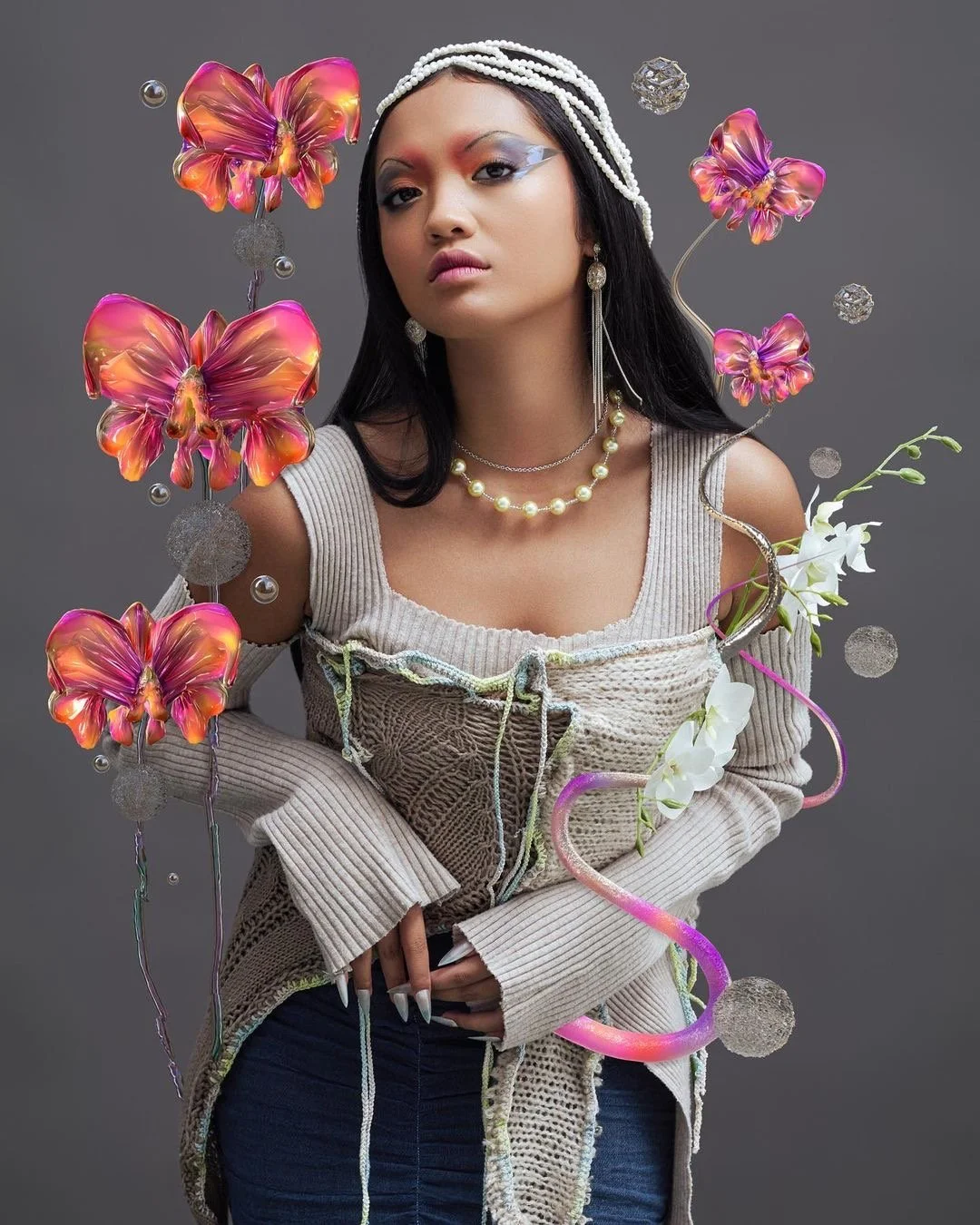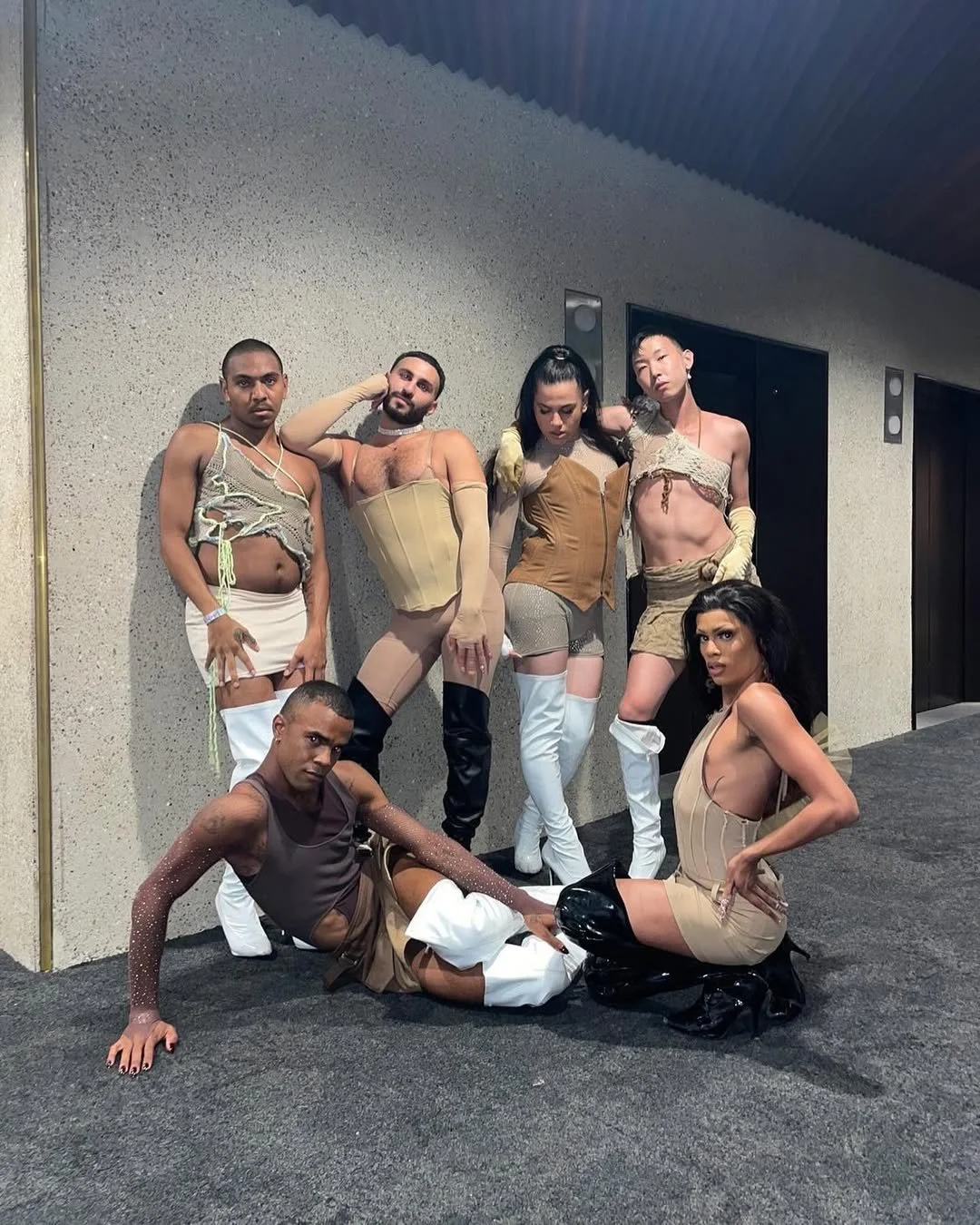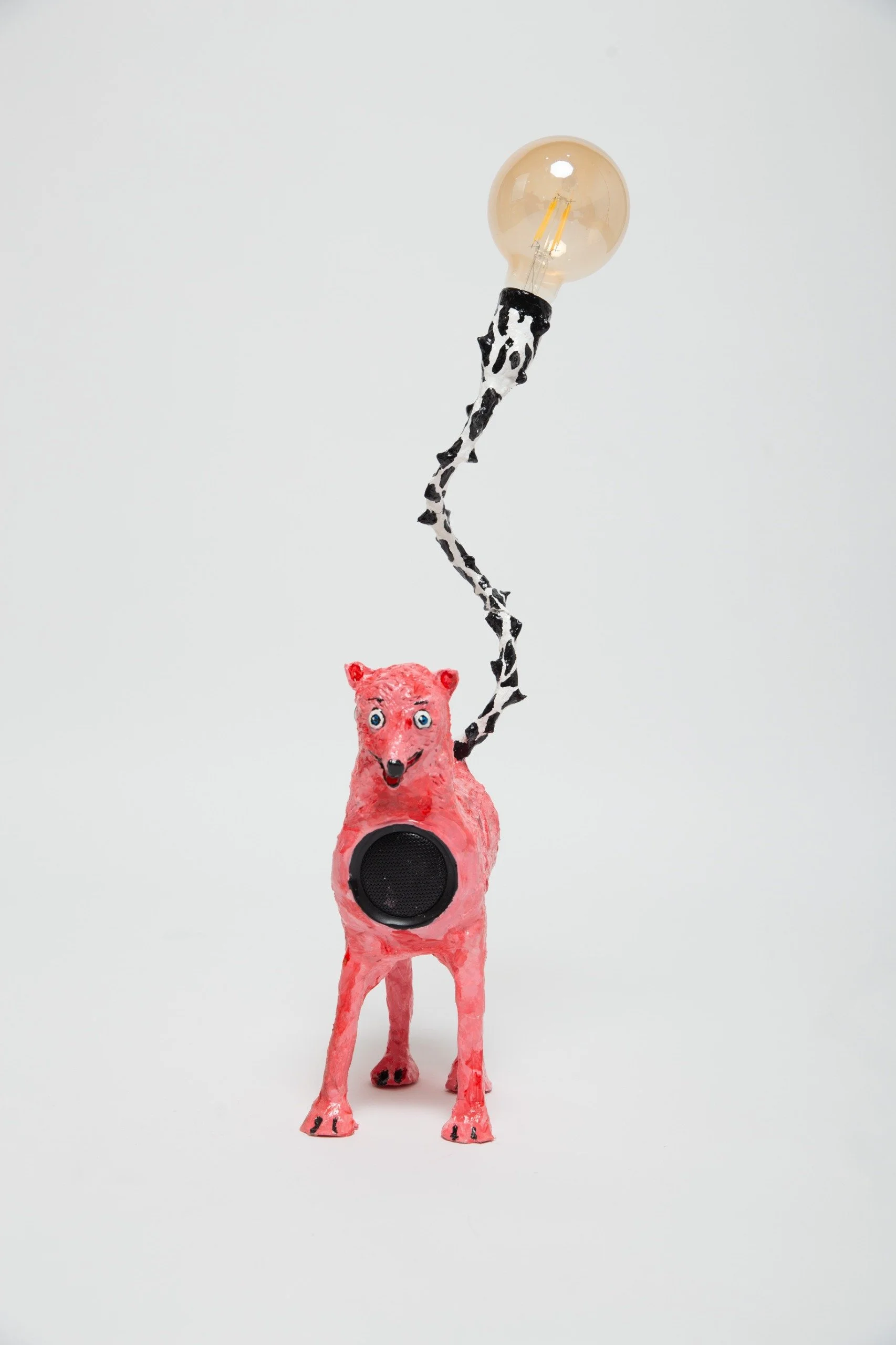Fresh Faces: Johno Surodji Sembor
Papuan heritage and material exploration at Displasmant
F&M’s Fresh Faces is a series featuring young Southeast Asian fashion practitioners, where we speak with them about how they embarked on their careers and what propels them as creatives.
Emerging from the intersection of memory, material exploration, and cultural narrative, Johno Surodji Sembor is a designer whose work is guided by personal history and a strong tactile instinct. With a background in interior design and early experience in fashion styling, he draws from crochet techniques passed down by his mother, alongside a lifelong familiarity with thrifting and handmade craft.
Since founding Displasmant in 2022, Johno has expanded the label from an experimental fashion project into a multidisciplinary practice encompassing accessories and interior objects. In this conversation, he reflects on his process: how he draws from his Papuan heritage, channels the energy of Indonesia’s youth and club cultures, and deconstructs materials and archetypes to reimagine what local identity can look and feel like today.
Johno Surodji Sembor, founder of Displasmant. Photo by Dea Rahajeng, make-up by Rara Endoh. Image courtesy of Displasmant.
Hi, John! Could you tell us about your background? What influences have shaped the way you approach design today?
I have long been into fashion, probably because my mother had great style. I grew up in Papua, and she was very much into thrifting. Most of our clothes growing up were secondhand, and this was long before thrifting culture became popular and people had more awareness of sustainable fashion. My mother also loved making crochet bags and hats and little accessories. I figured that I would combine the two things I grew up around: thrifting and crochet.
‘Unprecedented Nature’ Editorial for Pap Magazine. Photography by Julius Juan Justianto. Styling by Johno Surodji Sembor. Images courtesy of Displasmant.
What was the initial idea behind Displasmant, and how has the project evolved since its founding in 2022?
I used to work as a fashion stylist and I would incorporate upcycled thrifted pieces whenever I could. But when I graduated in 2021 and the pandemic hit, I returned home to Papua. Stuck indoors, I finally learned how to crochet and that was when I made our first piece, the green bikini tank.
Growing up, we were surrounded by Western influences, but during the pandemic, I noticed that more people were starting to appreciate Indonesian craft and culture. In Papua especially, there is so much richness to draw from. Traditional clothing from my hometown in Karubaga is bold, vibrant, and unapologetically full of colour. My mother also loves dangdut. It is a popular Indonesian music genre known for its kitschy beats, and sparkly, theatrical fashion, and carries that same expressive aesthetic. Displasmant is a blend of all that: my childhood, my culture, and my creative instincts. That is why our slogan is “Resetting the Kalcer” or Culture. It is about reimagining how we view and embrace our local identity.
Displasmant’s Bikini Bikini-an but Not Rili bottom. Photo by Julius Juan Justianto. Image courtesy of Displasmant.
Your collections often blur binaries of gender, archetype, and proportion. How do you view fashion in relation to the body, and how does that inform your design approach?
When I first moved to Jakarta to pursue my Bachelor's degree in Interior Design, one of the biggest things I noticed was how differently body types are perceived. In Jakarta, beauty is often equated with being slim. But in Papua, it is the opposite, and women with curves are celebrated. During the pandemic, I also spent a year living in Bali, where I noticed many people, often those who had moved from Jakarta, seemed uncomfortable in their own skin, like they did not quite fit into that narrow beauty standard. So I thought that we needed silhouettes and clothing that celebrate the body as it is, and pieces that make the wearer feel confident and comfortable in their own skin.
One of the ideas I have been exploring with Displasmant is what I call “aurat-core”, a play on the word aurat, which refers to parts of the body traditionally meant to be covered. It also connects back to Papuan culture, where women are traditionally topless. Of course, I am not saying we should all walk around topless (laughs), but I do like challenging the idea and showing parts of our body that we have been taught to hide.
Displasmant’s Crocshit Cendrawasih top. Photo by Sharon Angelia. Image courtesy of Displasmant.
Let’s talk about your use of crochet. What is it about the technique or material that draws you in, and how do you see it fitting into your broader visual language?
When I first learned to crochet, I noticed most people, including my mother, followed strict patterns and calculations. I decided to try something more intuitive. Crochet is not a new technique, but it is often approached in a neat, formulaic way. I wanted to break away from that and explore it from a more experimental and instinctive lens.
I am more of a visual person than a technical one. I like mixing thrifted crochet pieces with whatever yarn I have on hand. The secondhand crochet I find tends to be softer, so I usually pair it with yarn that has more structure or texture to create contrast.
In 2022, I also launched a line of necklaces and accessories, also inspired by my mother, who loves to fish. I used to see fake fish lures around the house and thought, “What a shame only fish get to see these!” Most of the beads I use come from friends who donate old jewellery, which I then combine with beads I collected during my travels through Solo, Jogja, and Bali.
One ongoing challenge is sustainability. Since I mostly work with found or limited materials, it is difficult to recreate pieces on demand. I am still figuring out how to grow the business while staying true to the experimental, one-of-a-kind spirit that defines our identity.
From left to right: Displasmant’s Mancing Mania Mantap necklaces draw inspiration from John’s mother’s love for fishing, and the local community in his hometown of Karubaga. Images courtesy of Displasmant.
You work closely with your mother and aunts to craft some of the pieces for Displasmant. What are some of the most meaningful takeaways from that ongoing collaboration, and how do you hope to reflect those stories through your pieces?
Working on Displasmant with my mother and aunts has been special. For simpler patterns like hats and bags, they usually take the lead, but when I am developing new silhouettes or prototypes, I will start them off before passing them over. Whenever I am in Papua, we often crochet together, on the beach, or even once in a hospital while looking after my uncle. That is what I love about it: you can do it anywhere. I have crocheted on the back of motorbikes in Bali and on MRT trains in Jakarta.
Over time, my mother and aunties began to see the work differently too. Once they saw how Displasmant reimagines cultural references in a modern, creative way, they started to realise that our traditions and heritage could be shared and celebrated, and that people were responding to that. They have been incredibly supportive. Right now, I am planning to return to Papua to grow the business and build a stronger production base from there.
Displasmant’s Mancing Mania Mantap necklace. Photo by Dea Rahajeng. Styled by Gloria Stephanie. Image courtesy of Displasmant.
Could you walk us through your creative and technical process when developing a collection?
To be honest, most of the time I do not even know what I am making when I start. I usually begin by looking at the textile or materials, then experiment directly on the mannequin and try different crochet patterns until something takes shape. Once I have established the silhouette or direction, I pass it on to my mother or aunt to finish. Each piece still feels like a personal artwork to me.
Sometimes I build a whole collection around a single idea, though we also take custom orders. The process always depends on the materials and colours we have on hand. Around half of what we use is either deadstock or upcycled, so we work with what is available and allow the materials to guide the results.
Displasmant’s Crocshit Hijau Dress featured on Yak Magazine. Images courtesy of Displasmant.
As a designer navigating Southeast Asia’s fashion landscape, what are some of the key challenges you’ve faced, and what new ideas do you hope your work can contribute to in the region and beyond?
From my observation, I think Jakarta has a bold and expressive fashion scene, but interestingly, most of our customers are actually based in Bali. People there seem more confident wearing our pieces out, especially for parties or flights out.
Personally, I envision Displasmant as something you can wear every day. But in Jakarta, our pieces are often used more for performances or stage wear. That is something I have been thinking about: how to make the brand feel more approachable and wearable for daily wear, because that is how I see it, and I want more people to embrace that too. At the same time, I hope there is a growing appreciation for individuality and the value of handmade, one-off pieces.
Displasmant’s one-of-a-kind Crocshit. Photography by Raffi, Styled by Lizda. Image courtesy of Displasmant.
Looking back so far, are there any moments or milestones that have felt especially significant to you?
Back in 2023, some of our pieces were worn at a ballroom event in Sydney by drag queens from the House of Silky community. That moment meant so much to me, and I felt that they saw me and my work. Watching the pieces worn on the runway was powerful and deeply validating.
We were also featured in Yak Magazine. They reached out wanting to showcase a few of our pieces, and I sent over some options. They ended up choosing the Crocshit in green, which felt full-circle, since it came from the same batch as the very first green top I ever made.
More recently, a few international retailers have expressed interest in stocking our work, which is most exciting. But with our limited production, I am still figuring out how to scale in a way that stays true to our DNA.
House of Silky ballroom community in Sydney dressed in Displasmant. Image courtesy of Displasmant.
You recently launched Displasmant Homecenter, expanding the brand into interiors, particularly through lamp design. What inspired you to explore this new medium, and how does it connect to the themes you’ve been working with in fashion?
Interiors are a big part of my life. I studied interior design, and my dad is a furniture maker, so just like crochet and thrifting, it is something that feels familiar and natural.
These days, we mostly focus on making lamps. I have an obsession with chandeliers, but since I move around a lot and often live in rentals or kosan, or boarding houses, installing a traditional chandelier just is not practical. That is what led me to design lamps that are easy to adjust and install, even in small or temporary spaces.
At first, I experimented with melted plastic, but the process was time-consuming and a little complicated. Eventually, I switched to clay, which I painted over with acrylic. Still, I am hoping to experiment with melted plastic again, this time using recycled bottles.
Lamp design experiments for Displasmant Homecenter. Images courtesy of Displasmant.
Lastly, what upcoming projects or experiments can we look forward to from Displasmant?
I have been inspired by Jah Jah Paris. They started as a clothing label but have since expanded into different areas under the same name. They have an Afro-vegan canteen and even a sound system collective.
Seeing that made me want to explore similar possibilities for Displasmant, whether through food-related projects or perhaps even starting a party collective. Displasmant was born out of club culture and going-out outfits after all, so it feels like a natural next step. It is something I am excited to develop further, not only as a creative expansion, but also as a way to grow and stay connected with our community.
And also, we would love to be stocked in the APOC store!
Learn more about Displasmant on their Instagram at @displasmant.

